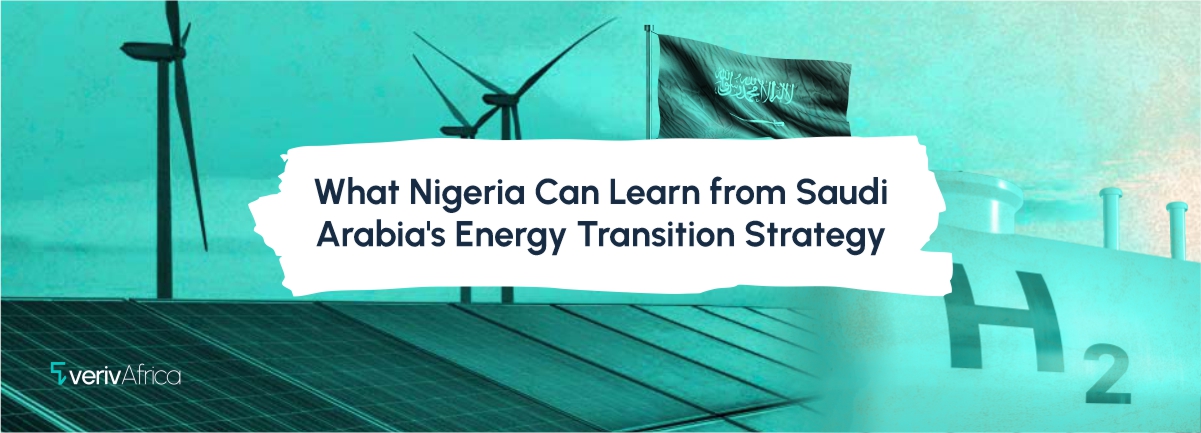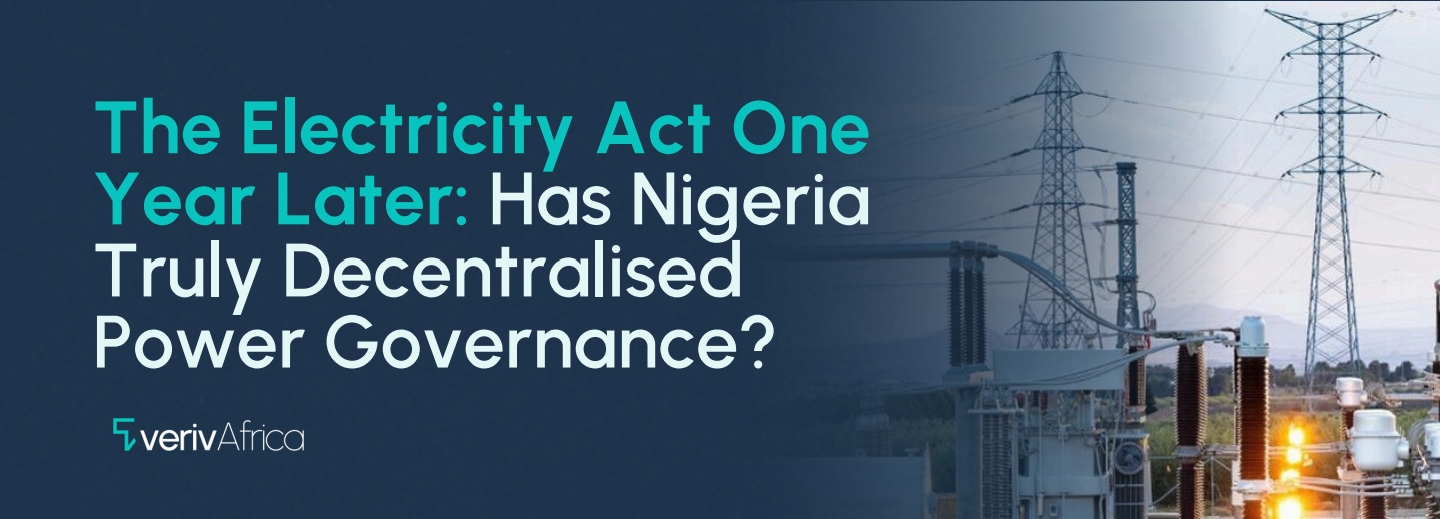As the world transitions to clean energy technologies, oil-rich nations are under pressure to achieve a just transition and diversify their economies. Among these, Saudi Arabia, the Middle East and North Africa’s (MENA) economic giant and largest oil-producing country, is set to reposition itself beyond the oil economy under the National Renewable Energy Program (NREP). Similarly, Nigeria, Africa's largest economy and a major crude oil producer, is also on track to transition through the Energy Transition Plan (ETP) and the Long-Term Low Emission Development Strategy (LT-LEDS). The ETP was launched in 2022, showcasing the roadmap to achieving net-zero emissions by 2060. Despite the similarities, Saudi Arabia’s NREP is a flagship movement that has shown significant progress, adding approximately 6,800 MW of renewable energy to the country’s grid within two years, compared to Nigeria’s ETP, which is more of a technical document. This disparity raises the question: What can Nigeria learn from Saudi Arabia's renewable energy strategy?
Current State of Renewable Energy in Both Countries’ Electricity Mix
According to the International Energy Agency (IEA), Nigeria’s electricity mix includes over 24% renewable energy, of which over 98% is hydropower. On the contrary, Saudi Arabia's renewable energy share in 2022 is just a little over 1%, with most of its power generation predominantly from oil (41%) and natural gas (58%). However, Saudi Arabia may soon outpace Nigeria because it has quadrupled its installed renewable capacity from 700 MW to 6800 MW within two years and is forecasting an additional 60 GW worth of clean energy capacity by 2030. On the other hand, the record of installed renewable energy in Nigeria’s national grid is less than 400 MW.. Therefore, despite the progress in designing a roadmap, implementation remains weak. Numerous challenges, including inconsistent policy implementation, limited infrastructure, and substantial funding gaps, mark Nigeria’s renewable energy transformation pathway. Unlike Nigeria, Saudi Arabia has devised a more structured and strategic approach to widening its renewable energy portfolio and reshaping it beyond oil and gas.
Figure 1: A Chart Showing Nigeria and Saudi Arabia’s Electricity Mix in 2022. Source: IRENA.
Saudi Arabia’s Energy Transition Strategy
Saudi Arabia’s national blueprint, Vision 2030, was launched in 2016 with the ambitious goal of diversifying its economy beyond hydrocarbons. This vision anchored the kingdom’s energy transformation under a project called the Saudi Green Initiative, which is overseen by the NREP and the Ministry of Energy with the core goal of increasing its renewable energy mix to 50% by 2030.
Saudi Arabia’s ambition goes beyond just adding renewable energy to its mix. It also aims to become a global leader in green hydrogen production. To achieve this goal, Saudi Arabia launched its flagship hydrogen project, the NEOM Green Hydrogen Project, with the goal of producing 600 tonnes of hydrogen daily. NEOM is the largest utility-scale, commercially based hydrogen facility in the world that runs exclusively on renewable energy (solar and wind energy). NEOM’s impact is envisioned to go beyond producing only in Saudi Arabia by positioning the country as a leading exporter of hydrogen. To make the project a success, NEOM partnered with ACWA Power and Air Products as an equal joint venture.
Aside from hydrogen production, Saudi Arabia has progressed with mega solar projects and wind energy farms. There are over 10 existing solar farms in Saudi Arabia (Figure 2) and about 6 existing wind projects (Figure 3). For the mega solar farms, four have been commissioned, four are under development, and the remaining four are targeted for commissioning in 2025 and, at the latest, 2026. The figures below show the status of each farm and their planned/installed capacities. Prominent among the solar farms is the Sakaka Solar Power Plant, which was inaugurated in 2021 with a generating capacity of 300 MW. What made it stand out was its affordability, with an LCOE (levelised cost of electricity) of about $0.023 per kWh.
Figure 2. Solar Projects in Saudi Arabia with Current Status of Deployment. Collected by VerivAfrica across various sources.
In terms of nuclear energy, the Kingdom has no record of an established nuclear power plant. However, there have been plans to establish a nuclear power plant at the Duwaiheen/Khor Duwaiheen site near the UAE border. The King Abdallah City for Atomic and Renewable Energy (KA-CARE) was launched in 2009 with the objective of leading the development of this first-of-its-kind nuclear plant.
Figure 3. Installed and Planned Wind Farms in Saudi Arabia
Another prominent energy transition strategy that the kingdom implemented is Carbon Capture and Storage (CCS). Aramco, SLB, and Linde partnered to build one of the largest CCS hubs in the world, in Jubail, Saudi Arabia’s eastern province. The project's first phase was completed in 2024, and construction is expected to be finished by 2027. The objective of this project is to help Aramco reduce both Scope 1 and Scope 2 emissions by capturing 9 million tonnes of CO₂ annually, while also complementing blue hydrogen and ammonia production.
Just like other parts of the world, geothermal energy in Saudi Arabia is still in its exploration stage. Despite this, the development of geothermal energy is evident with growing preliminary studies and policy interests. A notable example is the ongoing exploration project at the King Abdullah University of Science and Technology (KAUST), which set off in 2024. A 400-meter shallow geothermal well was drilled by TAQA Geothermal for research and development of new technologies that can enhance the future of geothermal energy extraction, monitoring, and surveillance in Saudi Arabia and globally.
Nigeria's Current Path
Similar to Saudi Arabia’s Vision 2030, Nigeria has the LT-LEDS, a long-term vision to build a zero-carbon economy by 2060. The LT-LEDS was launched in Dubai in 2023 during the COP28. The ETP, on the other hand, serves as a framework to guide the country towards achieving net-zero emissions. It was launched a year before the LT-LEDS but was incorporated into the broader climate plans. These blueprints have not resulted in any significant industrial transformation, as they are still a work in progress.
According to the IRENA-ECN 2023 REmap report, most installed renewable energy systems remain confined to small-scale off-grid solar and old hydropower plants. As of 2024, the country’s grid-connected renewable capacity is less than 500 MW. This highlights a deep implementation gap despite having policies. As shown in Figure 1, the country’s electricity mix remains heavily fossil-based, with legacy hydropower accounting for a significant portion and solar and wind energy contributing less than 1%.
Notable progress so far include:
- 124+ mini-grids deployed by the Rural Electrification Agency.
- SEfroALL, NSIA, and Africa50 have launched a $500 million solar and wind energy fund.
- The Electricity Act, passed in 2024, aimed to facilitate decentralised state-level governance.
A recent development in wind energy includes the hybridisation of the 10 MW Lambar Rimi wind farm in Katsina. This model will add 10 MW of solar energy to the initial 10 MW wind power plant. You can read more about wind energy in Nigeria here. For other clean energy and low-emission systems, such as hydrogen, carbon capture and storage (CCS), or geothermal energy, there is currently no strategic roadmap available.
What Nigeria Can Learn.
- Local Content Development: Saudi Arabia developed a localisation and Saudisation policy in its Vision 2030. The policy mandates domestic content manufacturing in solar, wind, and hydrogen value chains as well as manpower sourcing. Entry-level jobs in such fields are strictly for Saudi citizens who get trained by expatriates coming through strategic partnerships. It increases local job creation and facilitates collaboration with global players to train Saudi citizens in various fields of technology and policy analysis.
- Institutional Coordination: Saudi Arabia’s Ministry of Energy is the central coordinating office for energy transition. It plays a unifying role across sectors. In Nigeria, the effort is fragmented among the REA, ECN, NERC, NSIA, and other entities.
- Large-Scale Projects: Saudi Arabia focused on building mega solar plants and wind farms. Nigeria has over 217 GWh of untapped solar energy, yet the maximum it has gone is 1.5 MW. Utility-scale projects can be used on the national grid for general electricity supply.
Saudi Arabia’s strategy shows the power of integrating various renewable energy technologies and low-emission pathways like hydrogen production, CCS technology, local industrialisation of solar PVs, and global partnerships. Nigeria can adopt a similar model of diversifying its energy portfolio, building utility-scale projects, and boosting local manufacturing.
References
ACWA Power. (2025). NEOM Green Hydrogen Project. ACWA Power. https://acwapower.com/en/projects/neom-green-hydrogen-project/
Akpata, O., Okusami, D., Awonuga, Y., & Ogba, D. (n.d.). Templars Nigeria Energy Transition Plan: A journey towards equity, fairness and inclusion. https://www.templars-law.com/app/uploads/2022/10/Nigerias-Energy-Transition-Plan-.pdf
Asaba, B. (2024, September 17). Saudi Arabia achieves major milestone on first nuclear power plant project – Utility Business MENA. Utility Business MENA. https://www.utilitybusinessmena.com/nuclear/saudi-nuclear-power-ambitions
Carbon capture, utilisation, and storage. Saudi Aramco. https://www.aramco.com/en/what-we-do/energy-innovation/advancing-energy-solutions/carbon-capture-utilization-and-storage
Cariaga, C. (2024, February 20). KAUST and TAQA break ground on a geothermal research well in Saudi Arabia. ThinkGeoEnergy – Geothermal Energy News. https://www.thinkgeoenergy.com/kaust-and-taqa-break-ground-on-geothermal-research-well-in-saudi-arabia/
Cariaga, C. (2025, March 6). What role will geothermal play in the energy transition of Saudi Arabia? Think GeoEnergy - Geothermal Energy News. https://www.thinkgeoenergy.com/what-role-will-geothermal-play-in-the-energy-transition-of-saudi-arabia/
IRENA, & Energy Commission of Nigeria. (2023). Renewable Energy Roadmap: Nigeria. International Renewable Energy Agency. https://www.irena.org/publications
Kgi-Admin. (2023, May 10). Top five solar PV plants in development in Saudi Arabia. Power Technology.https://www.power-technology.com/data-insights/top-5-solar-pv-plants-in-development-in-saudi-arabia
National Council on Climate Change. NIGERIA’S LONG-TERM LOW-EMISSION DEVELOPMENT STRATEGY – 2060. In NIGERIA’S LONG-TERM LOW-EMISSION DEVELOPMENT STRATEGY – 2060. https://unfccc.int/sites/default/files/resource/Nigeria_LT-LEDS_01122023_240425_094617.pdf
Proctor, D. (2024, December 31). Saudi Group announces 1 GW of renewables as part of $50 billion China investment. POWER Magazine. https://www.powermag.com/saudi-group-announces-1-gw-of-renewables-as-part-of-50-billion-china-investment/
Saudi Vision 2030. (2025, June 30). Dumat Aljandal. Vision 2030. https://www.vision2030.gov.sa/en/explore/explore-more/dumat-aljandal
Saudi Vision 2030. (2025, June 30). Sakaka Solar Power Plant. Vision 2030. https://www.vision2030.gov.sa/en/explore/projects/sakaka-solar-power-plant
Saudi Arabia - Wind farms - Countries - Online access - The Wind Power. (n.d.). https://www.thewindpower.net/country_windfarms_en_110_saudi-arabia.php
Wind energy in Nigeria: Feasibility of development and local supply chain. (n.d.). https://www.verivafrica.com/insights/wind-energy-in-nigeria-feasibility-of-development-and-local-supply-chain










